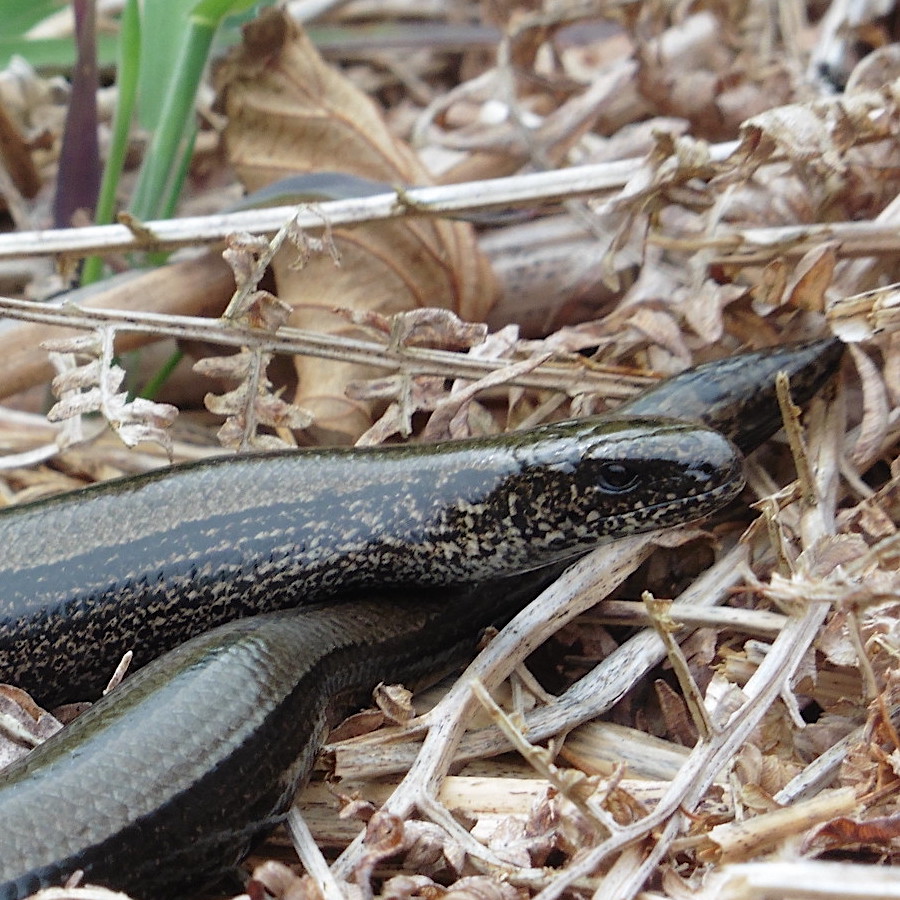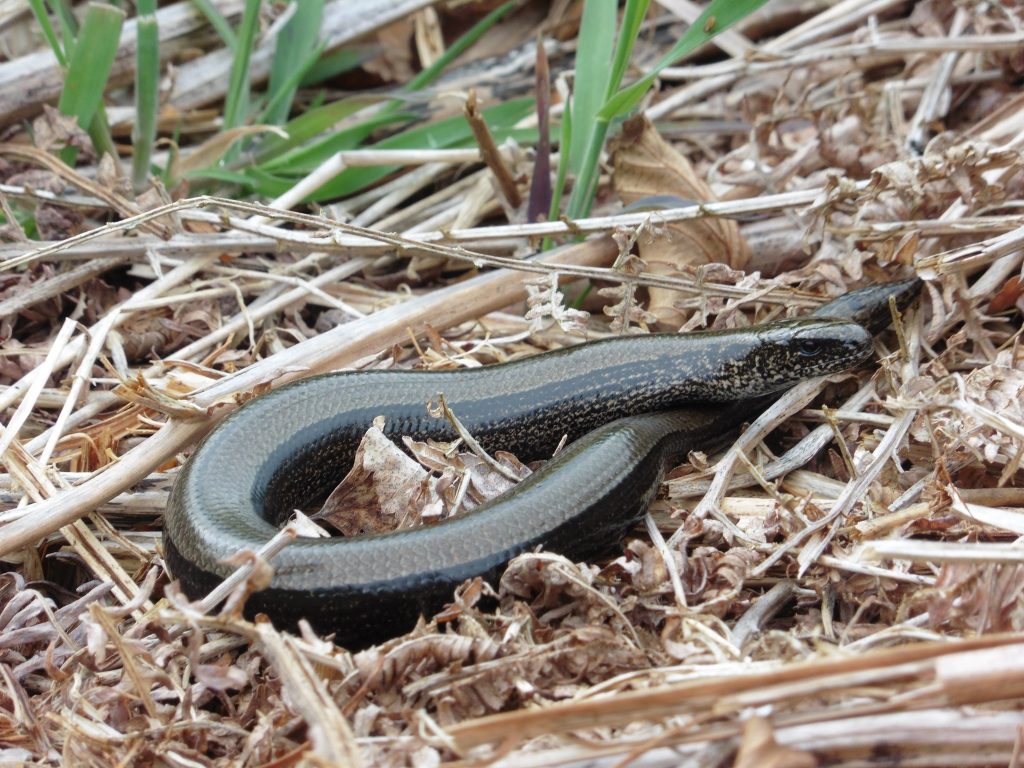
Slow Worms are perhaps our most secretive lizards.
Photo: © Natural England/Philip Ray
Scientific name: Anguis fragilis
Cornish name: Anaf
Other names: Blindworm
Conservation status: Protected in the UK under the Wildlife and Countryside Act 1981; Priority Species in UK Biodiversity Action Plan; Appendix III of Bern Convention.
Slow Worms appear superficially like snakes, but are in fact a legless lizard. Unlike snakes, they have eyelids and, in common with some other lizards, can lose their tail (autotomy) when grabbed in order to deter predators. The tail does regrow to some extent, but will always be smaller than it was originally.
They are semi-fossorial (= partly burrowing), and as such are seldom found basking: in this they are dissimilar from other UK reptiles, compared to which they generally maintain a lower body temperature. They are most active in the evening, and during the day can be found using hiding under refuges such as stones or leaf litter: garden compost heaps are a favourite.

With a shiny skin and being brown, grey or reddish in appearance, Slow Worms are sexually dimorphic in that the female generally has darker sides and a stripe along the length of the back, and the head of the male tends to be larger.
Did you know…?
…gardeners should be pleased to see Slow Worms in their gardens, as they eat slugs and snails (they are however very vulnerable to predation by domestic cats)
…they are a long-lived reptile: they can live up to 30 years in the wild, and an individual in captivity has been recorded as living for 54 years.
More information and references:
Arnold, N. and Ovenden, D., 2002. Reptiles and Amphibians: Britain & Europe (Collins Field Guide), second edition. Collins, London.
Brown, R.P. and Roberts, N., 2008. Feeding state and selected body temperatures in the slow-worm (Anguis fragilis). Herpetological Journal 18: 59−62.
Published: June 2013
Author: Amanda Scott
Photos: © Natural England/Philip Ray
